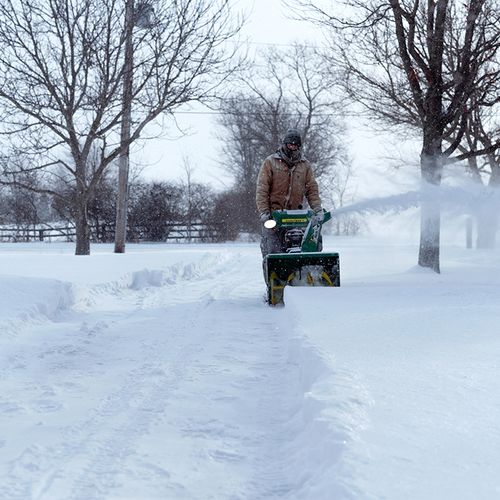Snowblowers might make clearing the sidewalk quicker and easier, but those who use them continue to show up in emergency rooms with hand injuries and accidental amputations, say medical experts.
"The injuries need to be prevented, because they're not the type of injuries that can be reconstructed," said Daniel Master, MD, an orthopedic surgery resident at University Hospitals Case Medical Center in Cleveland and the study's lead author. The nature of the tissue damage caused by snowblowers makes a full recovery extremely difficult and often leads to amputation, he said, and even if you have the amputated part, it's essentially useless."
The Study
Dr. Master and his colleagues researched snowblower-related hand injuries sustained by 22 patients he treated from 2002 to 2005 at Hartford Hospital in Connecticut. He presented their findings at the American Academy of Orthopaedic Surgeons' annual meeting, in Las Vegas.
"The weather is a major factor that causes the cluster of these injuries," Dr. Master said. "When the snow is dense, the machines get clogged, and people put their hands down the chute" to clear it.
Snowblower Dangers
Part of the problem, he found, is that people sometimes ignore the safety warnings that come with the snowblowers. "A large majority were aware of the warnings but stuck their hand down the shoot when it was running anyway." Dr. Master said.
In addition, he explained, snowblowers usually have two blades, including one that's not visible. That's the one that causes most injuries, he said. Also, there's a lag time between when you release the dead-man's switch (a lever that prevents the mechanism from rotating when it is released or the operator is not at the controls) and when the blade stops moving," Dr. Master said.
Danger apparently exists even when the machines do not seem to be running, though. Dr. Master said that when a clog is removed, the blades can spin again using stored energy.
James G. Adams, MD, professor and chairman of emergency medicine at the Feinberg School of Medicine at Northwestern University in Chicago, said that he, too, had encountered patients with snowblower-related injuries during his time at Brigham and Women's Hospital in Boston from 1995 to 2000.
"In the winter, every day, people would come in with their fingers cut off," Dr. Adams said. "I remember taking care of a doctor on the medical staff who was shoveling his driveway and cut his fingers off. When the chute got clogged, there was still tension and torque, so as soon as you got snow out, the snowblower would turn really quickly and cut your fingers off.”
Safety Changes Made, But Injuries Still Occur
However, he said, manufacturers "changed it so there wasn't any residual torque, and that seemed to decrease the incidence of snowblower injuries."
But it didn't eliminate them.
"It's a good general public health message." Dr. Adams said. "Any reminder to the public that snowblower injuries are still occurring and have not been completely eliminated is still a good message."
